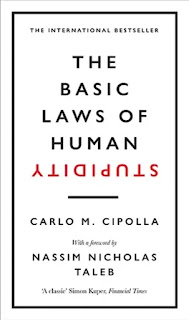Mesmerism Unveiled! by Leslie J. Gee (c)1885
Background information: From what is inferred in the book, the author was a popular stage performer of mesmerism, although I was unable to find anything about his performances on line. He seems to speak with a great deal of experience and the same kind of passion for his art that most hypnotists have today. This little book (approx 50 pages) was likely an item that he sold at his shows to those interested in learning for themselves.
While I was unable to find any information about his performances, he does include his home address (circa 1885) in order for readers to contact him if they had any questions. There is currently a somewhat rundown single-family house on the site (thanks, Google maps!) that was built in 1890. No record that I could find of the previous house or landowner.
The subtitle of this book is "The Only Work Ever Published Giving Full Instructions How to Practice and Master the Art of Psychology, or Mesmerism" and, indeed, there seems to be material that I have not seen in any other books of Mesmerism, so for novelty value alone, it's a worthwhile little volume.
Today we think of Mesmerism as a primitive kind of hypnosis, but that is not exactly the case. While is did utilize trance and suggestion to effect changes in the client, Mesmerism was based on the idea that there was an actual "magnetic fluid," an invisible energy, that ran through the nervous system, and which, with practice, could be projected to people and things to effect certain kinds of results. While mesmerism is a thing of the past, we find similar concepts surviving in Christian Science, Polarity, Laying on of Hands, Chinese Chi Gung and Indian Pranic healing, and so forth. A Mesmerist would typically wave his hands over his subject, utilizing "magnetic passes" to affect the energy flow of the subject. Because there was a direct exchange of energy between Magnetizer and subject, it was assumed there was some kind of telepathic connection at work, and indeed, the usual expected results that could be achieved from this art included the same that hypnotism is known for, like smoking, drinking, weight management, etc., it was also commonly believed that mesmerism could produce clairvoyance, telepathy and other exotic phenomena.
The book is written in an easy conversational style (albeit a very 19th century style). The most notable thing about this book is that it offers a rapid method of Mesmerism, utilizing touches on certain parts of the subject's head, in addition to the usual magnetic passes. Another thing is that he doesn't dwell on practice and exercises for projecting one's magnetic energy. (many of the books that I've read offer exercises for beginning Mesmerists like pointing your fingers at an empty chair to learn to project energy, or meditative energy gathering exercises). Typically mesmerism is a very slow process of making magnetic passes in front of the subject for at least half an hour, until trance is achieved (L.E.Young actually advised people to use hypnosis and not Mesmerism for stage shows because the Magnetic method was so slow and boring).
The author attempts to demonstrate that Mesmerism is a common phenomenon, and uses the examples of rapport between animals and trainers. He then goes on to describe the science behind it, which is primarily Phrenology (a debunked science of how different parts of the mind work), and a version of neurology which little resembles what we know today.
In addition to his own method, he presents three methods which he describes as being very popular (in his day). One is the slow method of magnetic passes, one is a kind of Mesmerism utilizing eye fixation that is called "Hypnotism" (that was probably brand new at the time!), and a kind of group operation.
For his own method, he goes into depth, including the attitude and emotion the Magnetizer should be using, the importance of will power and persistence, the specific touches and passes he employs on stage for rapid Mesmerism, and how to chose the most responsive subjects (several times in the book he reminds us that while everyone can be mesmerized, only 40 people in 1000 will be really easily brought into trance).
He gives directions on the way a beginner should start, and what to expect, and also some effects that can be done with a subject that are still common today, like spinning hand, acting out suggestions, singing, etc., and some suggestions we wouldn't use today, like pushing sewing needles into their cheek, convincing them to eat candles like candy, making them believe they're chased by snakes or that their house is on fire, etc. Suggestions that are not at all common today but were part and parcel of the Mesmerism were the development of psychic skills like clairvoyance and telepathy, though he does warn that it may take a hundred sessions before some people will develop these abilities. He even offers instruction on "charging" a glass of water in order to bring the magnetic power right to the internal organs.
Overall, the author is very encouraging and stresses persistence and patience in developing this ability. He advises beginners who may have questions to consult their local Mesmerist or Clairvoyant, or even send letters to his home. He even offers some herbal substances that he feels may strengthen the beginner's performance, including quinine and a tonic made of Valerian, Catnip, Skullcap, Coriander and Capsicum (the first three herbs are known for their calming, anti-stress qualities).
I have never had any experience performing Mesmerism, so I can't discuss the efficacy of the book, but as a nice addition to a library of this kind of ephemera. I couldn't even fins an image of the original printing, but the book can be found on the web in PDF form, and facsimile editions can be got from https://www.forgottenbooks.com/en/books/MesmerismUnveiled_10834811


























